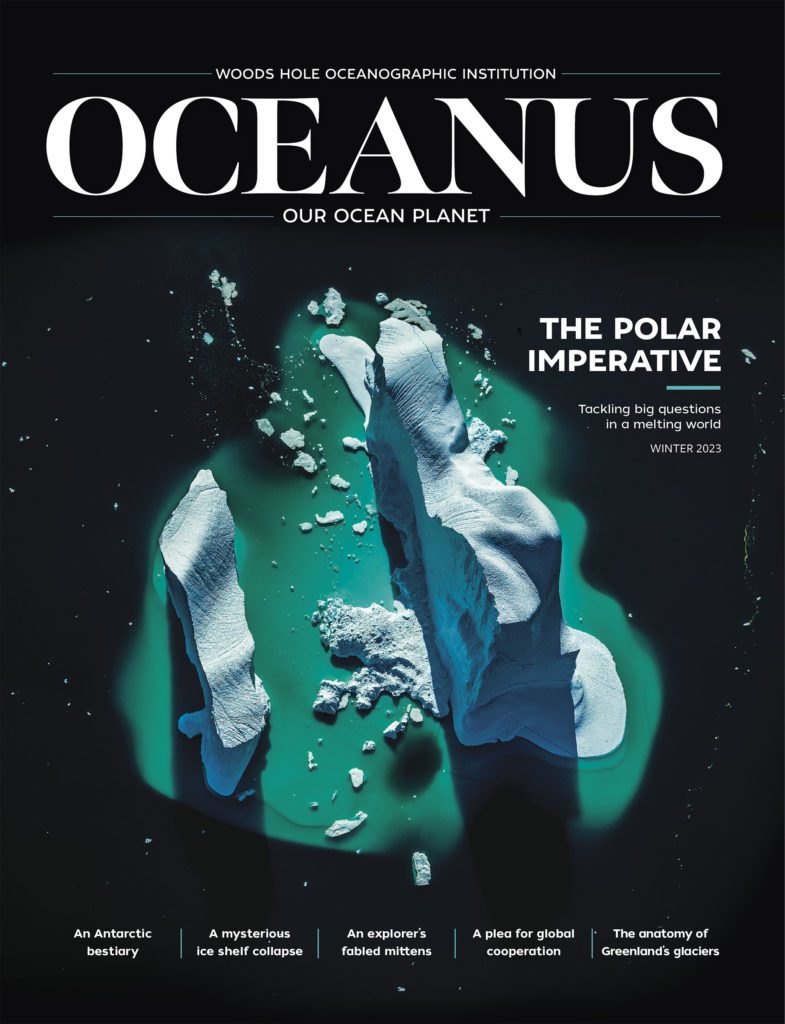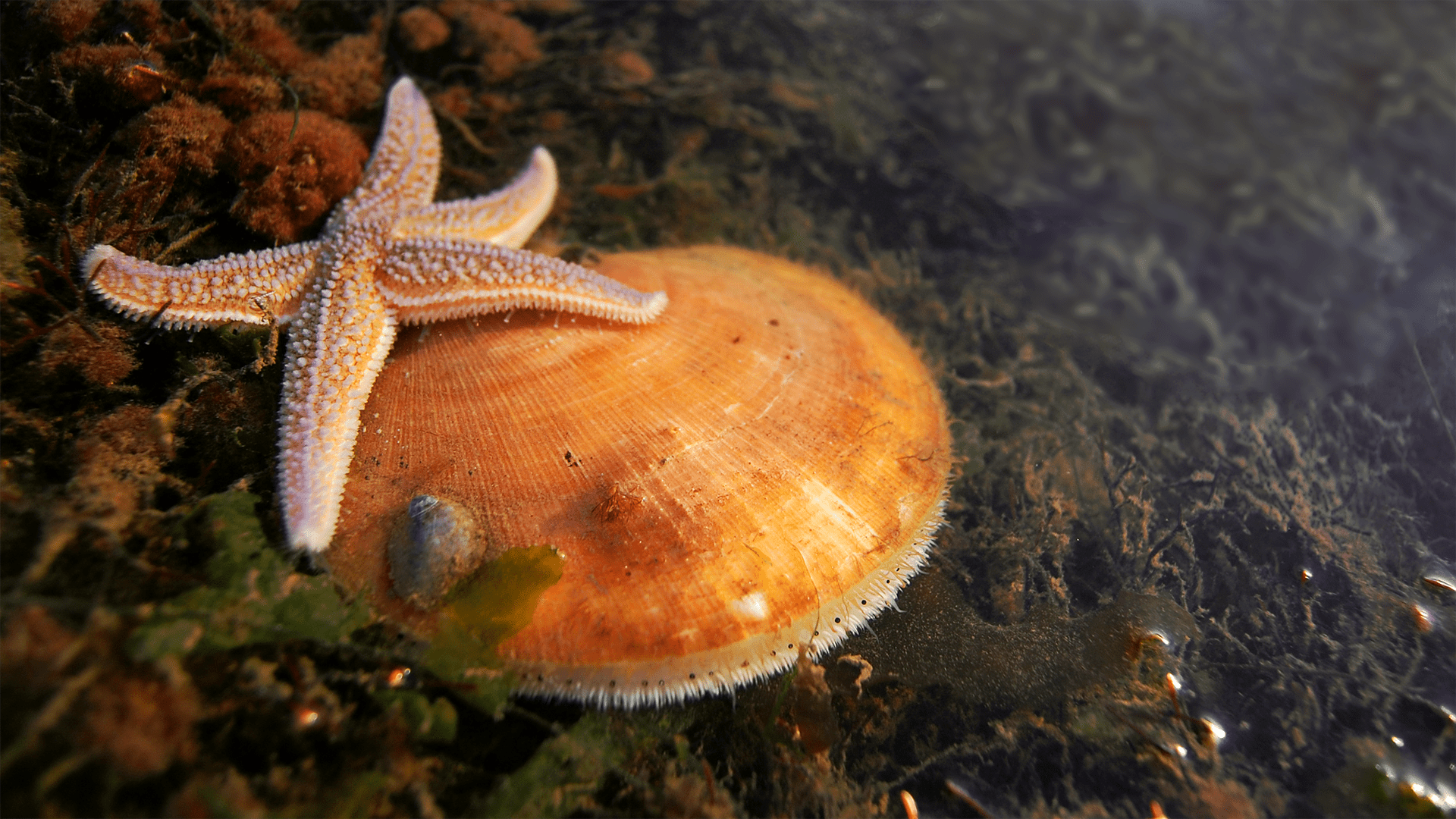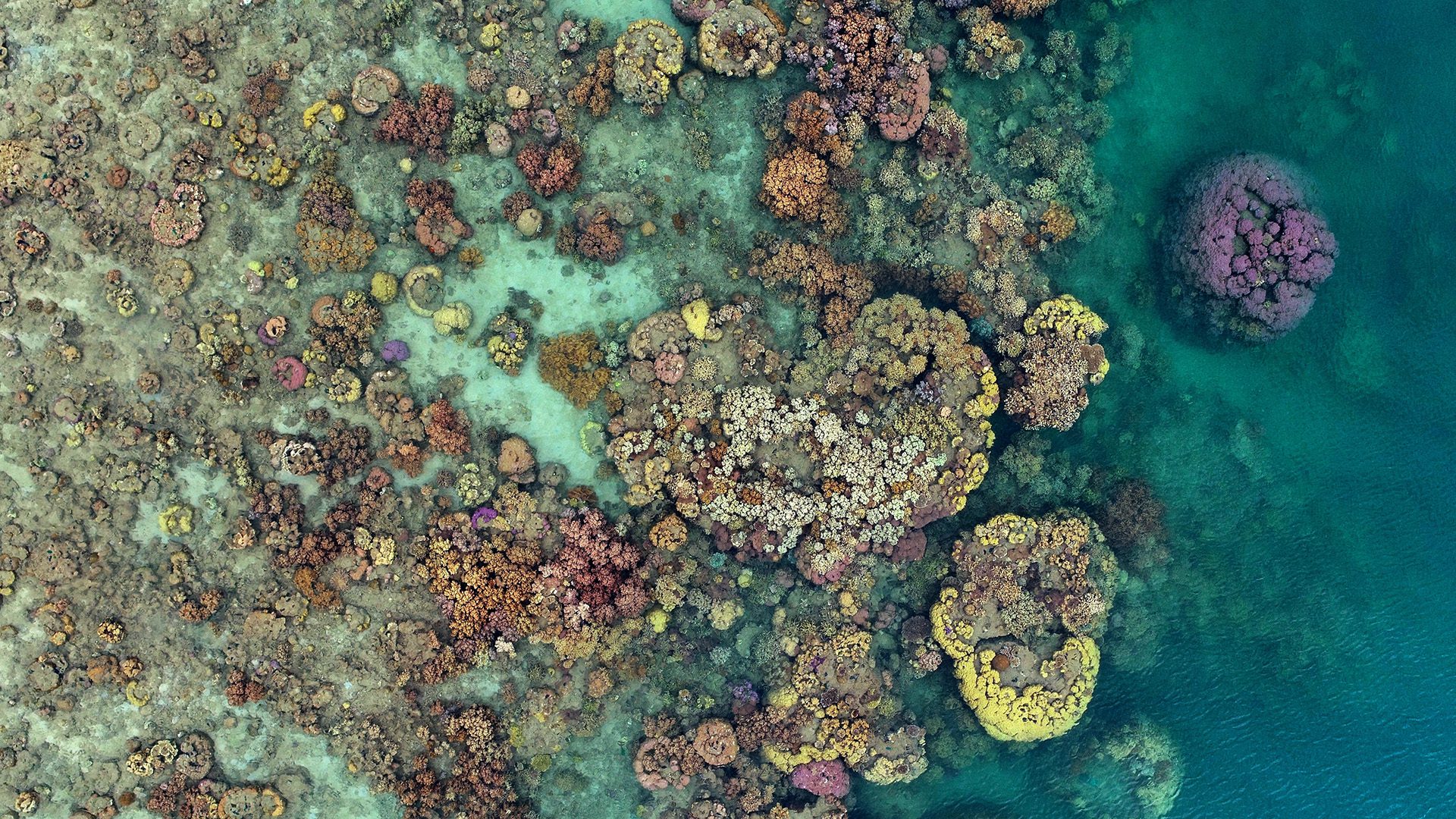
Is the Great Barrier Reef making a comeback?
The world’s largest reef saw record growth after years of bleaching, but it’s not out of the woods yet
Estimated reading time: 5 minutes
In 2022, the Australian Institute of Marine Science (AIMS) reported the highest levels of coral cover across two-thirds of the Great Barrier Reef (GBR) in over 36 years. After recent massive bleaching events impacted nearly 90% of Australia’s corals, it seems that anyone could see this news as a victory. So, why aren’t scientists celebrating?
“There’s no question this is positive news—these data show reefs can recover rapidly from damage,” says WHOI’s Konrad Hughen, a principal investigator on the institution’s Reef Solutions Initiative. But are they still under threat?
“Yes, they are,” said Hughen.
Since 2016, reef experts and marine park authorities have been in a near-constant state of damage control. Marine heatwaves, pollution, and a voracious outbreak of coral-eating crown-of-thorns starfish (COTs) have delivered sucker punch after heart-wrenching sucker punch to this popular world wonder. In 2020, a study funded through an ARC Center for Excellence found that roughly half of the Great Barrier Reef’s corals had disappeared in the last few decades, with the remainder projected to vanish in the next century if we don’t curb planetary warming. In early 2022, following four of the biggest marine heatwaves in the GBR’s history, the fever briefly broke, opening a small but significant window for some species to reclaim territory. One part of why scientists are still wary of the reef’s future has to do with which of these species are returning more than others.
According to AIMS’s Long Term Monitoring Program, most are a weedy genus of fast-growing corals known as Acropora. These include species like staghorn, elkhorn, and tabletop corals, which, though prolific, are easily broken up by cyclones—weather events that are expected to become more frequent and intense. Worse, they’re a favorite food for COTs, a species that continues to grow more comfortable on the Great Barrier Reef as surrounding waters warm.
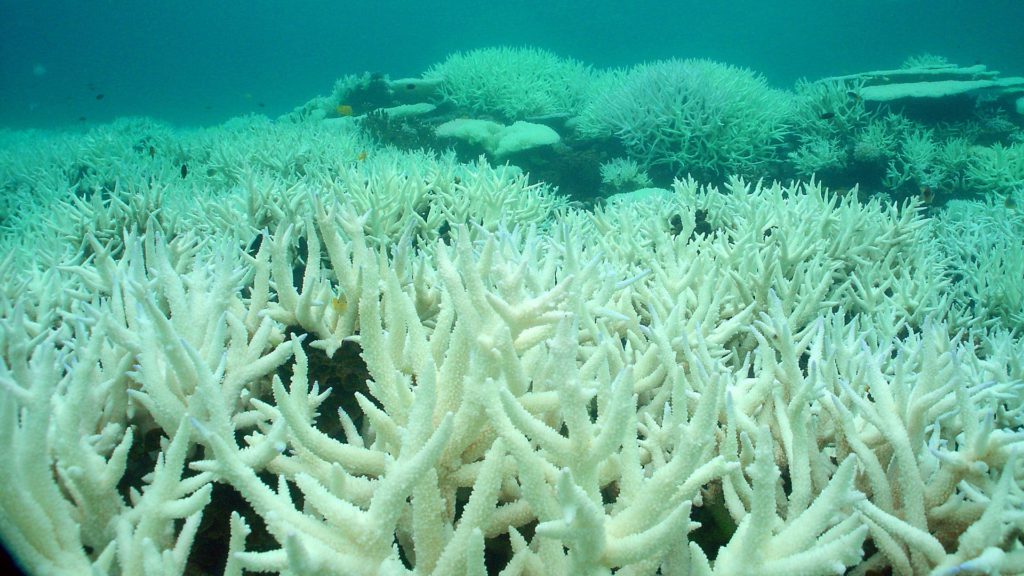
Bleached staghorn corals take-up much of the seafloor on a patch of the Great Barrier Reef c.2006 (Photo courtesy of P. Marshall, © Commonwealth of Australia (GBRMPA))
“Instead of a diverse, old-growth forest, [the reef] may now be like a monoculture of planted pulp trees,’” says Hughen. With less diversity of corals on the Great Barrier, he adds, there will also be fewer structures that house and feed various species of fish and marine invertebrates. Some, like the parrotfish—a valuable grazer that keeps algae from smothering corals—have already suffered decline in the northern third of the reef following mass bleaching events that began in 2016.
So how do we know whether to celebrate recovery on the Great Barrier Reef? This opens a long-held debate about the distinction between words like “recovery,” “recovered,” and “healthy.”
“Health depends on your perspective,” says Hughen. “There’s a lot of variability on any given reef, so these things aren’t just perfect until they’re messed with. They’re in flux.”
And not all scientists assess reef health in the same way. A coral biologist, for instance, may be excited at the prospect of higher coral cover, says Hughen, while a marine chemist on the same reef may find the presence of stress hormones a troubling sign. Hughen, along with colleagues on the Reef Solutions Initiative Team, are working to develop health diagnostic tools by factoring multiple indicators together—things like reef soundscapes, microbial communities, biochemical cues, and biodiversity levels.
“We’re trying to create baselines for what ‘healthy’ reefs look like,” says Hughen.
Currently, assessing coral cover alone can be a daunting task given the scale of the Great Barrier Reef. At more than 134,000 square miles, the reef is already bigger than the U.K., Switzerland, and Holland combined. In addition to aerial surveys, scientists with the Long Term Monitoring Program make observations by using manta tows, a technique where a snorkeler is towed in the water behind a boat to make visual assessments of coral cover, bleaching, and the presence of apex predators (among other things).
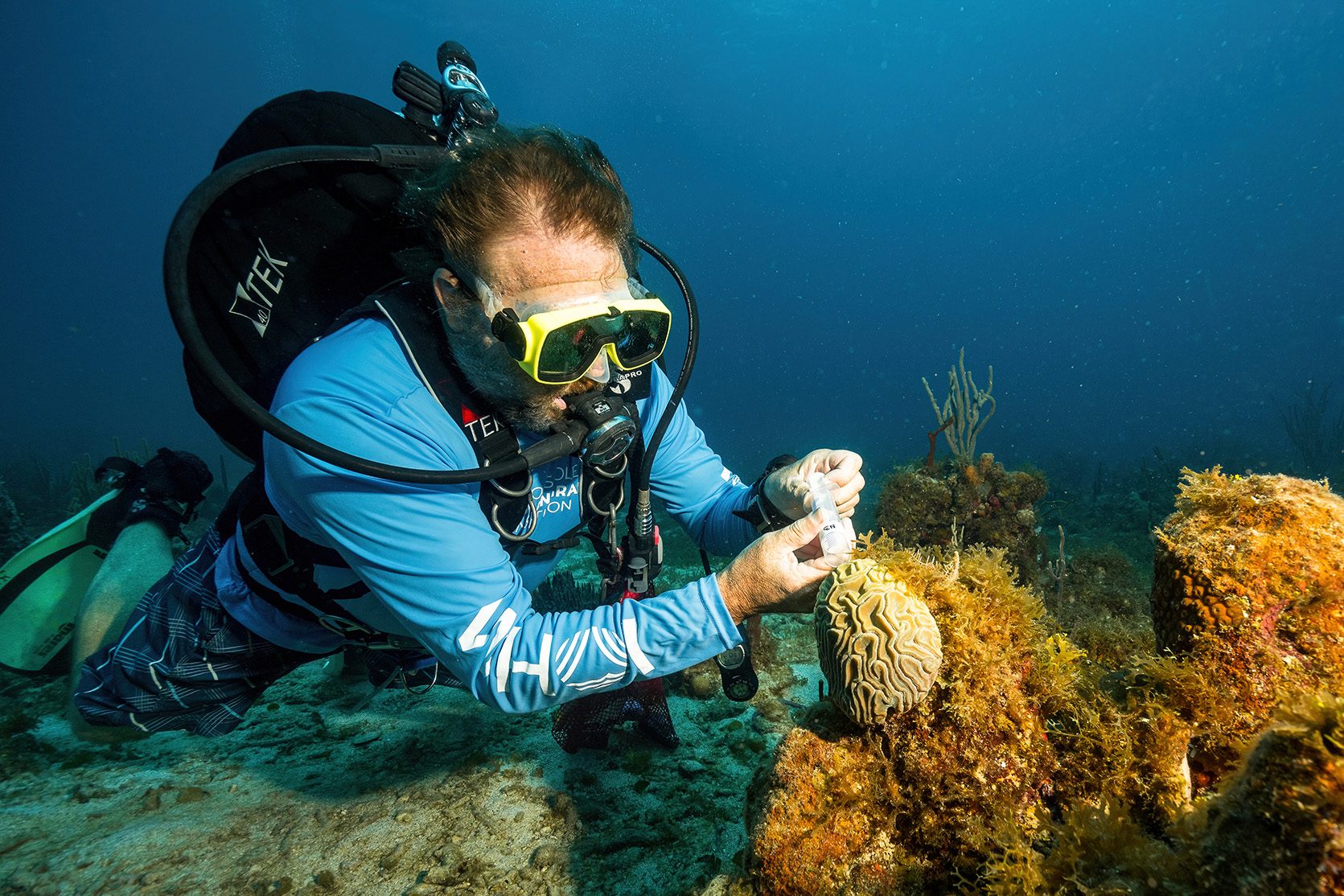
Dr. Konrad Hughen collects seawater samples near coral colonies to study the chemical indicators of coral health. (Photo by Austin Greene, © Woods Hole Oceanographic Institution)
Like most coral reefs, the Great Barrier Reef has always experienced natural highs and lows in coral cover and biodiversity. How low those lows are, says Hughen, can tell us more about the overall impacts from human activity and climate change. During this latest period of regrowth, the Northern and Central Great Barrier reefs saw an average increase in coral cover back to 36%—up from a historic low of 27%. This may be short-lived, as the Intergovernmental Panel on Climate Change projects an additional die-off of 70-90% of global corals if the world reaches 1.5°C (2.7°F) of warming.
There is still some encouraging news here. Despite multiple stressors like marine heatwaves, COTs, pollutants from agricultural runoff, and overfishing, this regrowth period demonstrates that the Great Barrier Reef is able to bounce back—even with one less pressure.
“The point is that reefs are resilient and they’re always recovering, even if not fully recovered,” Hughen emphasized. “The question is whether we’re going to keep impacting and damaging them faster than they can come back.”
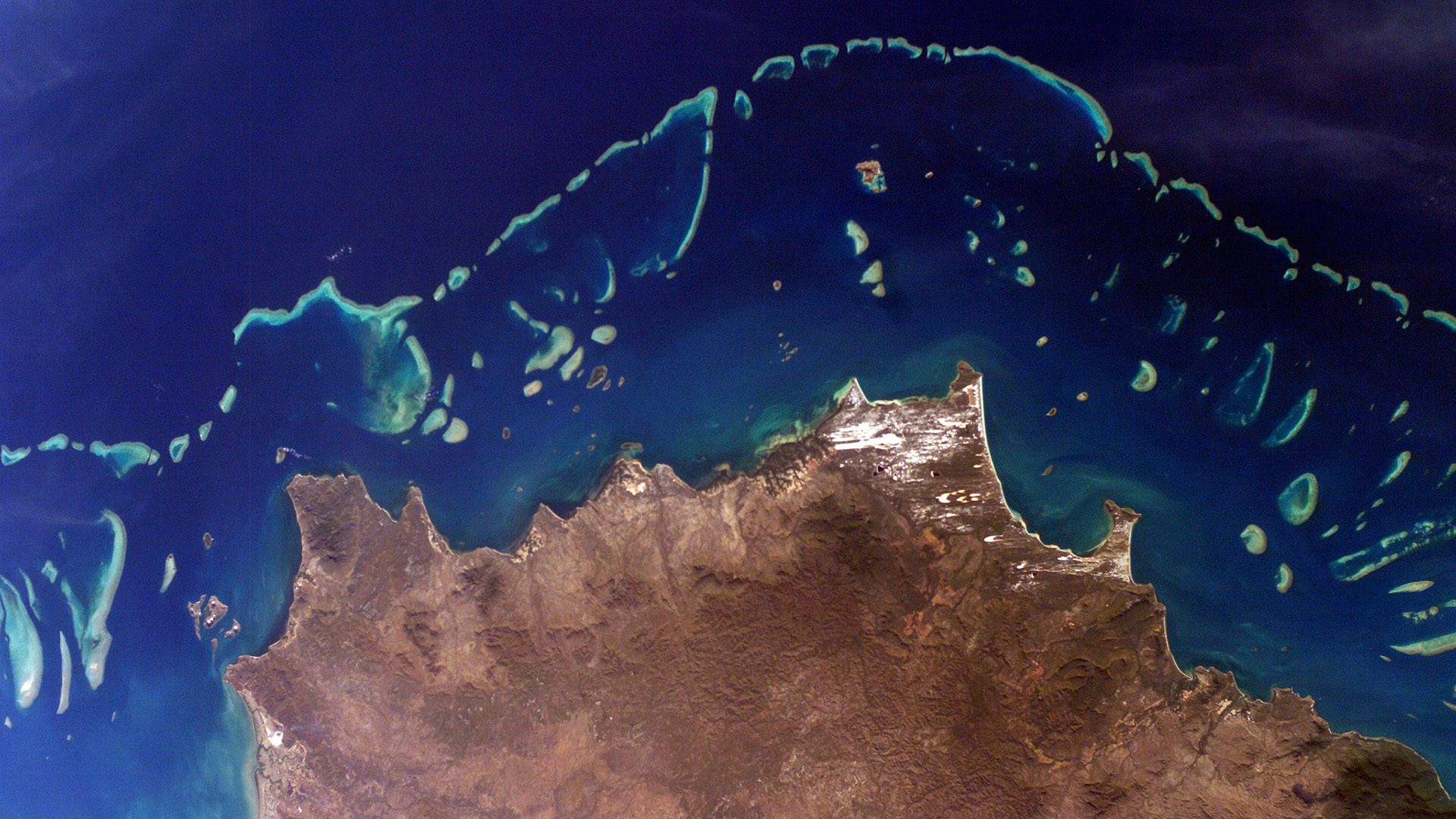
A patchwork of the Great Barrier Reef frames the coastline around Queensland, Australia. (Photo courtesy of NASA)
Dietzel Andreas, Bode Michael, Connolly Sean R. and Hughes Terry P. 2020Long-term shifts in the colony size structure of coral populations along the Great Barrier ReefProc. R. Soc. B.2872020143220201432 http://doi.org/10.1098/rspb.2020.1432
Emslie, Michael J., Annual Summary Report of Coral Reef Condition 2021/2022, Australian Institute Of Marine Science, 1 Aug. 2022. https://www.aims.gov.au/sites/default/files/2022-08/AIMS_LTMP_Report_on%20GBR_coral_status_2021_2022_040822F3.pdf. Accessed 10 Jan. 2023.
Emslie, Michael J., et al. “Decades of Monitoring Have Informed the Stewardship and Ecological Understanding of Australia's Great Barrier Reef.” Biological Conservation, vol. 252, 2020, p. 108854., https://doi.org/10.1016/j.biocon.2020.108854.
Graham, N., Jennings, S., MacNeil, M. et al. Predicting climate-driven regime shifts versus rebound potential in coral reefs. Nature 518, 94–97 (2015). https://doi.org/10.1038/nature14140
The Great Barrier Reef Marine Park Authority, and The Great Barrier Reef Marine Park Authority. Reef 2050 Plan Annual Report , Australian Government, July 2019. https://www.dcceew.gov.au/sites/default/files/documents/reef-2050-long-term-sustainability-plan-2021-2025.pdf. Accessed 8 Jan. 2023.
Mellin, Camille, et al. “Spatial Resilience of the Great Barrier Reef under Cumulative Disturbance Impacts.” Global Change Biology, vol. 25, no. 7, 2019, pp. 2431–2445., https://doi.org/10.1111/gcb.14625.
Stuart-Smith, R.D., Brown, C.J., Ceccarelli, D.M. et al. Ecosystem restructuring along the Great Barrier Reef following mass coral bleaching. Nature 560, 92–96 (2018). https://doi.org/10.1038/s41586-018-0359-9
